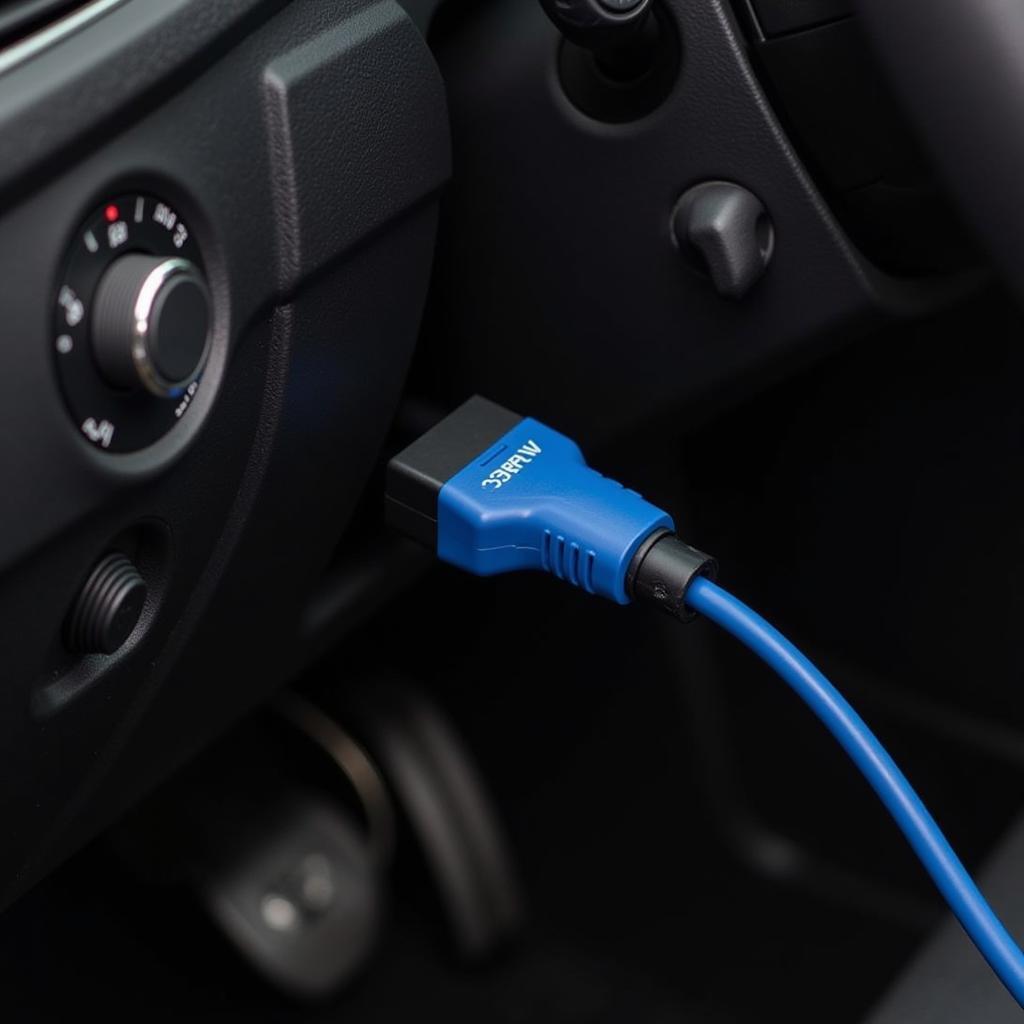Understanding and diagnosing turbo boost pressure issues is crucial for maintaining optimal vehicle performance. Using VCDS (Vag-Com Diagnostic System) effectively can pinpoint the root cause of these problems, allowing for targeted repairs and preventing further damage. This article provides a comprehensive guide to using VCDS for turbo boost pressure diagnostics.
VCDS offers a powerful toolset for analyzing boost pressure related data. From identifying underboost or overboost conditions to pinpointing leaks and faulty components, VCDS empowers both DIY enthusiasts and professional mechanics. Learning to interpret the data correctly is key to efficient troubleshooting. vcds boost pressure measuring block Knowing which measuring blocks to access and how to analyze the readings can save you valuable time and money.
Decoding VCDS Turbo Boost Pressure Readings
VCDS displays boost pressure data in various measuring blocks, specific to the vehicle’s make and model. Accessing these blocks requires navigating through the VCDS software and selecting the appropriate engine control module. The readings typically represent specified and actual boost pressure values, allowing for direct comparison and identification of discrepancies.
What does specified boost pressure mean? This is the target boost pressure determined by the engine control unit (ECU) based on various factors like engine load, throttle position, and RPM. Actual boost pressure, on the other hand, reflects the real-time pressure generated by the turbocharger. Any significant deviation between these two values indicates a potential problem.
Common Causes of VCDS Turbo Boost Pressure Discrepancies
Several factors can contribute to discrepancies between specified and actual boost pressure readings in VCDS. These include boost leaks, faulty N75 valves, malfunctioning turbochargers, and issues with the wastegate. Each of these issues presents unique symptoms and requires specific diagnostic procedures.
How to pinpoint boost leaks using VCDS? While VCDS doesn’t directly detect leaks, analyzing boost pressure readings under various engine loads and RPMs can help narrow down the possible location of a leak. A consistent drop in actual boost pressure under high load suggests a leak somewhere in the intake system. how to check turbo with vcds Understanding how to interpret these readings is key to effective diagnosis.
Troubleshooting Turbo Boost Pressure Problems with VCDS
VCDS offers several advanced features that aid in troubleshooting turbo boost pressure problems. Logging data during a test drive allows for a detailed analysis of boost pressure behavior under real-world conditions. This helps identify intermittent issues that might not be apparent during static testing. can vcds see boost leaks By examining the logged data, technicians can pinpoint specific instances where boost pressure deviates from the specified value.
What if my VCDS shows overboost? Consistent overboost conditions can damage the engine. VCDS can help identify the underlying cause, whether it’s a sticky wastegate, a faulty N75 valve, or a problem with the boost pressure sensor. Addressing these issues promptly is essential to prevent costly engine repairs.
“Accurate diagnosis is the foundation of effective repair. VCDS provides the necessary tools to understand the intricacies of turbo boost pressure systems,” says John Miller, Senior Automotive Diagnostics Engineer.
Advanced VCDS Techniques for Boost Pressure Analysis
Advanced users can leverage VCDS’s capabilities to perform more in-depth analysis of boost pressure data. Comparing actual boost pressure against requested boost pressure can reveal subtle issues with the turbocharger’s responsiveness. vcds map Understanding the relationship between these two parameters is crucial for diagnosing complex turbocharger issues.
“Mastering VCDS is like having an x-ray vision into your car’s engine. It empowers you to understand the complex interplay of various components and diagnose problems accurately,” adds Sarah Chen, Certified VCDS Technician.
Conclusion: Leveraging VCDS for Effective Turbo Boost Pressure Diagnostics
VCDS provides a comprehensive toolkit for diagnosing and resolving vcds turbo boost pressure issues. By understanding the various measuring blocks, interpreting the readings, and utilizing advanced logging features, you can effectively pinpoint the root cause of boost pressure problems and ensure optimal vehicle performance. vcds boost measuring block Proper use of VCDS is essential for maintaining the health and longevity of your turbocharged engine.
FAQ
- What is VCDS? VCDS is a diagnostic software for VAG (Volkswagen Audi Group) vehicles.
- How do I access boost pressure readings in VCDS? Navigate to the engine control module and select the appropriate measuring blocks.
- What does specified boost pressure mean? It’s the target boost pressure set by the ECU.
- What causes underboost? Boost leaks, faulty N75 valve, or a malfunctioning turbocharger.
- What causes overboost? Sticky wastegate, faulty N75 valve, or a problem with the boost pressure sensor.
- Can VCDS detect boost leaks directly? No, but it can help narrow down the possible location.
- Why is it important to diagnose vcds turbo boost pressure issues? To prevent further engine damage and maintain optimal performance.
Need expert assistance? Contact us via Whatsapp: +1 (641) 206-8880, Email: CARDIAGTECH[email protected] or visit us at 276 Reock St, City of Orange, NJ 07050, United States. Our 24/7 customer support team is ready to help. You can also explore related articles like “Understanding Boost Leaks” and “Troubleshooting N75 Valve Issues” on our website.


